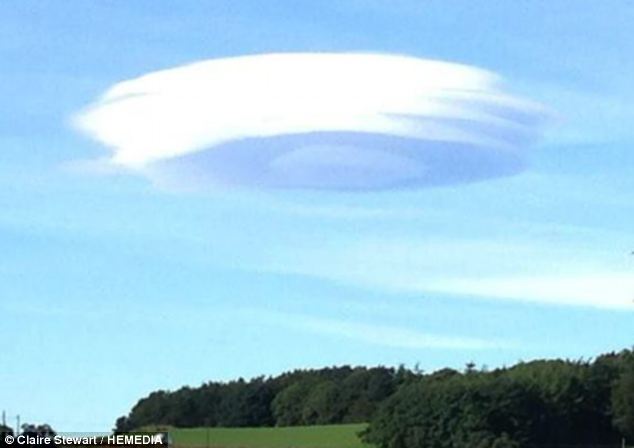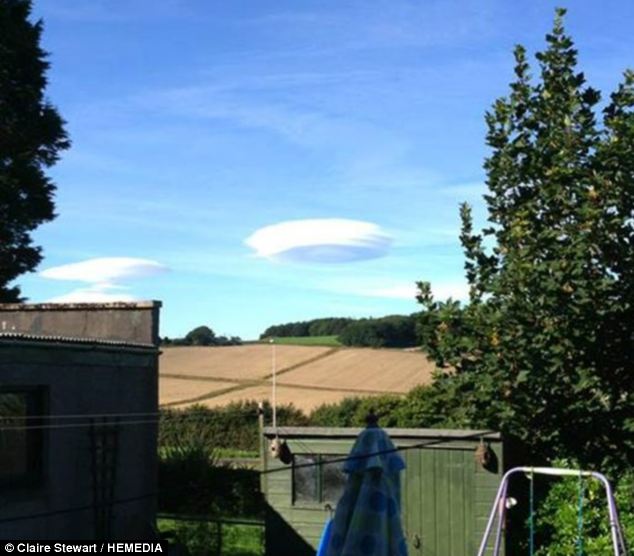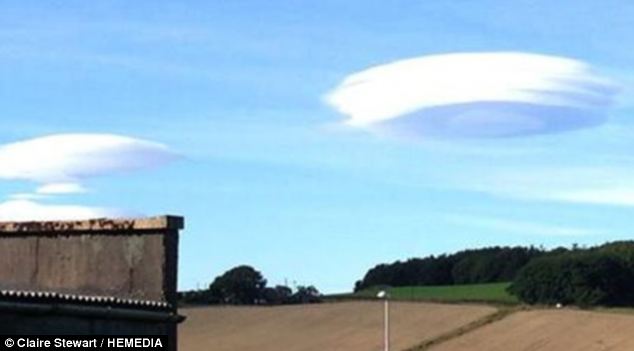Claire Stewart, 37, from Kincorth, Aberdeen caught sight of the strange-looking out over her back garden at 9.30am.
She said: 'I was just looking out from my home in Kincorth when I saw the cloud.
'It looked like a UFO and I had to double take before I realised it was actually a cloud.'

'It's very weird.'
A number of Aberdonians took to social networking sites to say they had seen the UFO-shaped cloud as well.
Norma Lawson said: 'I also got a photo of this when I was at Garthdee at 10am...amazing.'
Shona Gibson added: 'Beam me up Scotty.'

The clouds have been mistaken for UFOs in the past because of their smooth saucer-like shape.
A Met Office spokeswoman said the cloud was likely to have been formed over the Cairngorms.
She said: 'These photos show an excellent example of a cloud called Altocumuls Lenticularis.
'Lenticular clouds can form at heights between 6,500 and 16,500 ft, and are called lenticular because of their lens shape

'They can be seen at any time of year as long as the atmospheric condition are right.
'Both the clouds and the high temperatures are a result of the way the wind was blowing on Monday morning - from west to east - this means the western side of Scotland is seeing cloud and rain, but as the air moves over the mountains it becomes dry and cloud free allowing the temperatures to rise.



Reader Comments
to our Newsletter